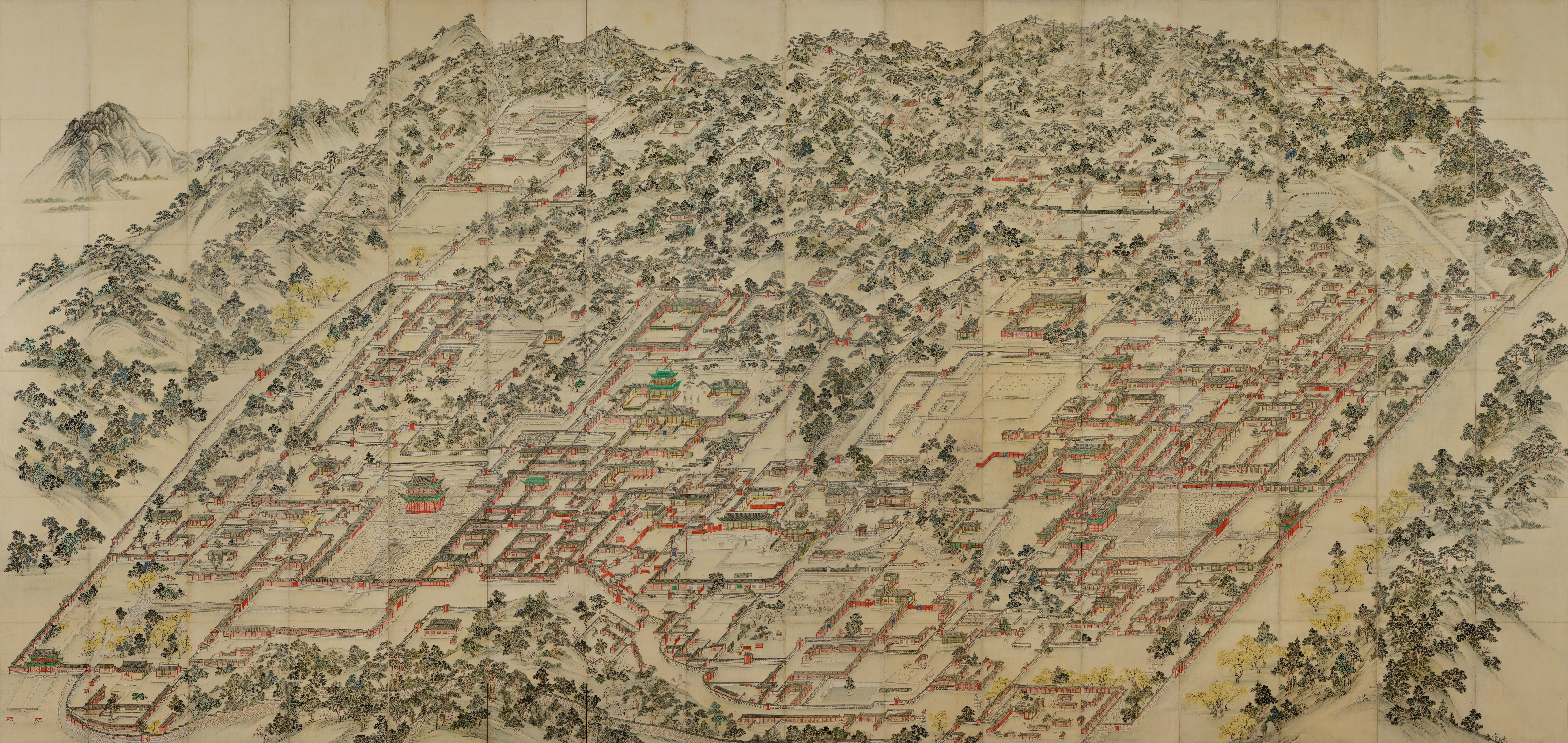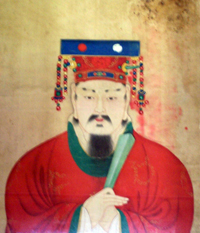|
Korean Gardens
Korean gardens are a type of garden described as being natural, informal, simple and unforced, seeking to merge with the natural world. They have a history that goes back more than two thousand years, but are little known in the west. The oldest records date to the Three Kingdoms period (57 BC – 668 AD) when architecture and palace gardens showed a development noted in the Korean '' History of the Three Kingdoms''. History Korean garden culture can be traced back more than 2,000 years. In recent years, 300 documents have been found, written during the Koryo (918–1392) and Choson (1392–1910) dynasties, that contain detailed records about traditional Korean gardens, many of which survive and can be visited today. In prehistoric times, Koreans worshipped nature, the sun, stars, water, rocks, stones, and trees. They especially believed that rocks had more power than water and other things in nature. Also, they have believed that rocks engendered God's good-will. Therefore, th ... [...More Info...] [...Related Items...] OR: [Wikipedia] [Google] [Baidu] |
Changdeokgung Buyongjeong
Changdeokgung (Hangul: 창덕궁, Hanja: 昌德宮; literally, "The Palace of Prospering Virtue"), also known as Changdeokgung Palace or Changdeok Palace, is set within a large park in Jongno District, Seoul, South Korea. It is one of the "Five Grand Palaces" built by the kings of the Joseon dynasty (1392–1897). As it is located east of Gyeongbok Palace, Changdeokgung—along with Changgyeonggung—is also referred to as the "East Palace" (동궐, 東闕, ''Donggwol''). Changdeokgung was the most favored palace of many Joseon kings and retained many elements dating from the Three Kingdoms of Korea period that were not incorporated in the more contemporary Gyeongbokgung. One such element is the fact that the buildings of Changdeokgung blend with the natural topography of the site instead of imposing themselves upon it. Like the other Five Grand Palaces in Seoul, it was heavily damaged during the Japanese occupation of Korea (1910–1945). Currently, only about 30% of the pre-Japa ... [...More Info...] [...Related Items...] OR: [Wikipedia] [Google] [Baidu] |
Gyeongju
Gyeongju ( ko, 경주, ), historically known as ''Seorabeol'' ( ko, 서라벌, ), is a coastal city in the far southeastern corner of North Gyeongsang Province in South Korea. It is the second largest city by area in the province after Andong, covering with a population of 264,091 people (as of December 2012.) Gyeongju is southeast of Seoul, and east of Daegu. The city borders Cheongdo and Yeongcheon to the west, Ulsan to the south and Pohang to the north, while to the east lies the coast of the Sea of Japan. Numerous low mountains—outliers of the Taebaek range—are scattered around the city. Gyeongju was the capital of the ancient kingdom of Silla (57 BC – 935 AD), which ruled about two-thirds of the Korean Peninsula at its height between the 7th and 9th centuries, for close to one thousand years. Later Silla was a prosperous and wealthy country, and its metropolitan capital of Gyeongju was the fourth largest city in the world. A vast number of archaeological sites an ... [...More Info...] [...Related Items...] OR: [Wikipedia] [Google] [Baidu] |
Cairo
Cairo ( ; ar, القاهرة, al-Qāhirah, ) is the capital of Egypt and its largest city, home to 10 million people. It is also part of the largest urban agglomeration in Africa, the Arab world and the Middle East: The Greater Cairo metropolitan area, with a population of 21.9 million, is the 12th-largest in the world by population. Cairo is associated with ancient Egypt, as the Giza pyramid complex and the ancient cities of Memphis and Heliopolis are located in its geographical area. Located near the Nile Delta, the city first developed as Fustat, a settlement founded after the Muslim conquest of Egypt in 640 next to an existing ancient Roman fortress, Babylon. Under the Fatimid dynasty a new city, ''al-Qāhirah'', was founded nearby in 969. It later superseded Fustat as the main urban centre during the Ayyubid and Mamluk periods (12th–16th centuries). Cairo has long been a centre of the region's political and cultural life, and is titled "the city of a thousand m ... [...More Info...] [...Related Items...] OR: [Wikipedia] [Google] [Baidu] |
Turkey
Turkey ( tr, Türkiye ), officially the Republic of Türkiye ( tr, Türkiye Cumhuriyeti, links=no ), is a list of transcontinental countries, transcontinental country located mainly on the Anatolia, Anatolian Peninsula in Western Asia, with a East Thrace, small portion on the Balkans, Balkan Peninsula in Southeast Europe. It shares borders with the Black Sea to the north; Georgia (country), Georgia to the northeast; Armenia, Azerbaijan, and Iran to the east; Iraq to the southeast; Syria and the Mediterranean Sea to the south; the Aegean Sea to the west; and Greece and Bulgaria to the northwest. Cyprus is located off the south coast. Turkish people, Turks form the vast majority of the nation's population and Kurds are the largest minority. Ankara is Turkey's capital, while Istanbul is its list of largest cities and towns in Turkey, largest city and financial centre. One of the world's earliest permanently Settler, settled regions, present-day Turkey was home to important Neol ... [...More Info...] [...Related Items...] OR: [Wikipedia] [Google] [Baidu] |
Ankara
Ankara ( , ; ), historically known as Ancyra and Angora, is the capital of Turkey. Located in the central part of Anatolia, the city has a population of 5.1 million in its urban center and over 5.7 million in Ankara Province, making it Turkey's second-largest city after Istanbul. Serving as the capital of the ancient Celtic state of Galatia (280–64 BC), and later of the Roman province with the same name (25 BC–7th century), the city is very old, with various Hattian, Hittite, Lydian, Phrygian, Galatian, Greek, Persian, Roman, Byzantine, and Ottoman archeological sites. The Ottomans made the city the capital first of the Anatolia Eyalet (1393 – late 15th century) and then the Angora Vilayet (1867–1922). The historical center of Ankara is a rocky hill rising over the left bank of the Ankara River, a tributary of the Sakarya River. The hill remains crowned by the ruins of Ankara Castle. Although few of its outworks have survived, there are ... [...More Info...] [...Related Items...] OR: [Wikipedia] [Google] [Baidu] |
Mexico City
Mexico City ( es, link=no, Ciudad de México, ; abbr.: CDMX; Nahuatl: ''Altepetl Mexico'') is the capital and largest city of Mexico, and the most populous city in North America. One of the world's alpha cities, it is located in the Valley of Mexico within the high Mexican central plateau, at an altitude of . The city has 16 boroughs or ''demarcaciones territoriales'', which are in turn divided into neighborhoods or ''colonias''. The 2020 population for the city proper was 9,209,944, with a land area of . According to the most recent definition agreed upon by the federal and state governments, the population of Greater Mexico City is 21,804,515, which makes it the sixth-largest metropolitan area in the world, the second-largest urban agglomeration in the Western Hemisphere (behind São Paulo, Brazil), and the largest Spanish language, Spanish-speaking city (city proper) in the world. Greater Mexico City has a gross domestic product, GDP of $411 billion in 2011, which makes ... [...More Info...] [...Related Items...] OR: [Wikipedia] [Google] [Baidu] |
Chapultepec Zoo
Chapultepec Zoo (Spanish: ''Zoológico de Chapultepec'') is a zoo located in Chapultepec Park; it is one of four zoos near Mexico City, and the best known Mexican zoo. It was founded July 6, 1923 by Mexican biologist Alfonso Luis Herrera using donations from private citizens and governmental funds from the Ministry of Agriculture and Development, and also with funds from the Society of Biological Studies. The zoo houses almost 2000 animals from more than 200 species. The zoo is known for its success in breeding programs of threatened species, including: giant pandas (first institution outside of China to successively breed the species in captivity), California condors (first institution outside of the United States to successively breed the species) and Mexican wolves (first litter of cubs born to released wolves). History The zoo opened in 1924. The biologist Alfonso L. Herrera, founder of Chapultepec Zoo, wanted to recreate the famous zoo and aviary of Moctezuma II. He wa ... [...More Info...] [...Related Items...] OR: [Wikipedia] [Google] [Baidu] |
Nantes, France
Nantes (, , ; Gallo: or ; ) is a city in Loire-Atlantique on the Loire, from the Atlantic coast. The city is the sixth largest in France, with a population of 314,138 in Nantes proper and a metropolitan area of nearly 1 million inhabitants (2018). With Saint-Nazaire, a seaport on the Loire estuary, Nantes forms one of the main north-western French metropolitan agglomerations. It is the administrative seat of the Loire-Atlantique department and the Pays de la Loire region, one of 18 regions of France. Nantes belongs historically and culturally to Brittany, a former duchy and province, and its omission from the modern administrative region of Brittany is controversial. Nantes was identified during classical antiquity as a port on the Loire. It was the seat of a bishopric at the end of the Roman era before it was conquered by the Bretons in 851. Although Nantes was the primary residence of the 15th-century dukes of Brittany, Rennes became the provincial capital after the 1 ... [...More Info...] [...Related Items...] OR: [Wikipedia] [Google] [Baidu] |
Korean Pine
''Pinus koraiensis'' is a species of pine known commonly as the Korean pine. It is native to eastern Asia: Korea, northeastern China, Mongolia, the temperate rainforests of the Russian Far East, and central Japan. In the north of its range, it grows at moderate elevations, typically , whereas further south, it is a mountain tree, growing at elevation in Japan. Other common names include Chinese pinenut. Description It is a member of the white pine group, ''Pinus'', section ''Quinquefoliae''. In its native habitat and growing conditions it can reach in height. Cultivated specimens may grow up to tall. It is pyramidal in shape, younger specimens with ascending branches and older trees with more horizontal branches that reach ground level. The gray or brownish bark flakes off to reveal reddish inner bark. Its branches are lined with bundles of five blue-green needles each up to and bear brown cones up to long. Uses and conservation The nuts of this tree are edible and sold com ... [...More Info...] [...Related Items...] OR: [Wikipedia] [Google] [Baidu] |




